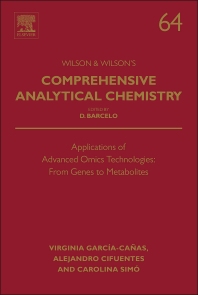LIMITED OFFER
Save 50% on book bundles
Immediately download your ebook while waiting for your print delivery. No promo code is needed.
The book contains contributions concerning the application of the new instrumental and methodological developments in omics technologies, including those related to Genomics, Tr… Read more

LIMITED OFFER
Immediately download your ebook while waiting for your print delivery. No promo code is needed.
The book contains contributions concerning the application of the new instrumental and methodological developments in omics technologies, including those related to Genomics, Transcriptomics, Proteomics, Peptidomics and Metabolomics, Lipidomics and Foodomics.The16 chapters discuss in detail: innovative applications of functional gene microarrays for profiling microbial communities, microRNA profiling, novel genotyping applications using microarray technology in cancer research, next-generation sequencing applied to the study of human microbiome, emerging RNA-SEQ applications in food science, recent progress in plant proteomics, applications of gel-free proteomic approaches, the challenges and applications of proteomics tools for food authenticity, the role of salivary peptidomics in clinical applications, metabolomic approaches to the study of degenerative, cardiovascular and renal diseases, and neonatal medicine. Also covered are other omics applications such as profiling of genetically modified organisms, the fundamentals, applications and challenges of foodomics, and MS-based lipidomics. Moreover, this volume includes relevant and updated aspects on bioinformatics, data treatment, data integration and systems biology. This book complements the previous volume "Fundamentals of Advanced Omics Technologies: New Advances from Genes to Metabolites" that covered the fundamental aspects of these new omics technologies.
Analytical scientists, PhD students and technicians in control laboratories, universities, hospitals, research laboratories and regulation agencies
VG
AC
CS